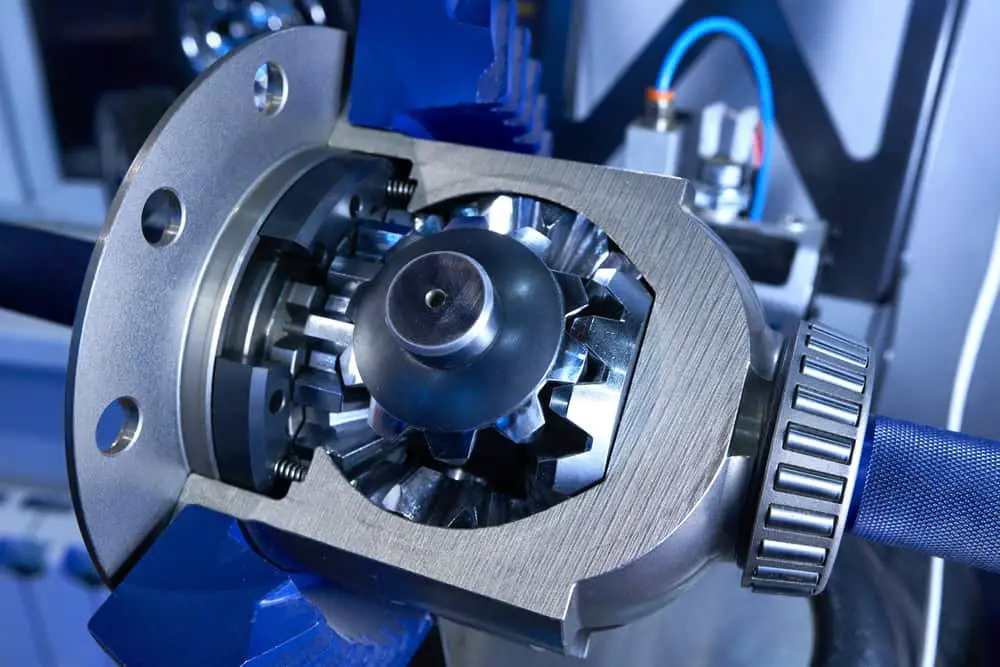
Differential Locking is a highly desired feature for the 4×4 adventurers as it enables the wheels to work in unison to pull the vehicle through the most demanding off-road situations. Lockable differentials are also the most expensive type of differential available in the 4×4 market today.
The ability to traverse the most demanding off-road obstacles cannot be valued enough. Getting stuck without another vehicle present to assist with the recovery can lead to a matter of life and death. Lockable differentials are most prized amongst 4×4 enthusiasts and in the most arduous locations.
In the worst-case scenario, a 4×4 vehicle can be positioned where only one front wheel and one rear wheel have traction. An open differential will cause the wheels off the ground or with little traction to spin, with none of the torque being transferred to the wheels with solid traction. Let’s look at why diff lockers are such a highly prized feature on 4×4 vehicles.
How Do Differential Locks Make 4×4 Vehicles Better?
A differential transfer case is designed to allow the wheels on an axle to rotate at different speeds and independent of each other. Wheels mounted on a fixed axle will rotate at the same speed by design, which is not a problem when both wheels move in the same direction.
When turning the wheel on, the inside of the turn will rotate fewer times than the outside wheel, which has to travel further as the outside arc of the axle is greater than the inside arch. The differential gear junction allows the outside wheel to rotate independently of the inside wheel.
If axles did not have differentials, vehicles would be more difficult to steer around corners as the inside wheels will be forced to lose traction to have the same rotations as the outside wheel. The result would be excessive tire wear and poor maneuverability (greater turning circles).
Under normal highway or straight dirt road driving conditions, the differential should be in an open position, allowing the wheels to rotate at different speeds as dictated by the twists and turns in the road. Even in 4×4 mode, the normal operating mode would be to have 4×4 traction engaged but the differential in an unlocked setting.
The value of locking the differential into a solid axle becomes apparent when one or more of the wheels lose contact with the surface or have very poor traction. When transferred to an open differential, the torque from the engine driveline will result in one wheel spinning while the other wheel remains stationary.
The low or no traction wheels will spin as the power is transferred to the axle with the least rotational resistance. The result is that the vehicle is stuck. By engaging the differential lock, the power is equally transferred to both wheels on the axle. The wheel with poor traction will still spin, but the other wheel will pull the vehicle out of the situation.
Having a lockable differential on the rear axle is normally sufficient for most vehicles, but it is possible to have lockable differentials on the front and rear axle. This setup will cost more than just a rear lockable differential, but conditions may demand that the vehicle has this capability.
In a worst-case scenario where a vehicle is stuck with only one front wheel and one rear wheel making sufficient contact to provide traction, the torque transfer can be sent to two wheels, one on the front axle and one on the rear axle. Sharing the workload in this way will provide the best capability to the driver to get the vehicle through the obstacle.
Lockable differentials will only ever be engaged for short periods when needed to navigate the most demanding situations. However, the absence of the capability provided by lockable differential will require recovery assistance via a winch or tow rope fitted to a second vehicle.
When no second vehicles are present, or there is nowhere to hook up a winch cable, the vehicle may be stuck until help arrives.
The Difference Between Lockable and Limited Slip Diffs?
A limited-slip differential is a great compromise between open differentials and lockable differentials. In normal operating conditions on highways and fairly straight unpaved roads, a limited-slip differential will operate very similar to an open differential.
If one wheel has little or no traction, the limited-slip differential will divide the torque between the wheels to provide enough torque to the wheel with traction to pull the vehicle through the obstacle. The wheel with poor traction will not receive all the power as would be the case with an open differential.
Limited slip differentials are very common on off-road vehicles and are less costly than lockable differentials. As diff lockers are only required in traversing the most demanding 4×4 obstacles, loading the additional cost onto the vehicle will drive up the price unnecessarily.
Vehicle manufacturers and 4×4 accessory equipment manufacturers cater to those off-roaders that require a diff lock as a feature. For most off-roaders, a limited-slip differential coupled with a good driving technique will suffice to overcome obstacles. The fitment of a winch and recovery equipment such as kinetic ropes and tread plates can be used to get out of tough situations.
Conclusion
For vehicles operating in demanding off-road conditions without the assistance of other vehicles, lockable differentials may be the difference between being stuck indefinitely or getting through an obstacle. In the Australian outback or the African jungle, being stuck with no one to assist you can be a matter of life and death.
Off-road vehicles will be fitted with limited-slip differentials as standard equipment on the front and rear axles. As conditions demand, differential lockers can be fitted to the vehicle. Most commonly, the diff locker will be installed on the rear axle as it carries most of the load.
For very demanding situations, differential locks can be fitted to the front and rear axles, a costly but necessary requirement. Driver skill and planning the best route to navigate around obstacles that pose the highest risk to man and machine is still the most important factor in getting to your destination.


